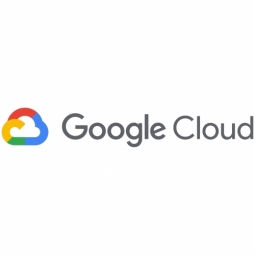Technology Category
- Application Infrastructure & Middleware - Data Visualization
- Platform as a Service (PaaS) - Application Development Platforms
Applicable Industries
- Consumer Goods
- Retail
Use Cases
- Behavior & Emotion Tracking
- Leakage & Flood Monitoring
Services
- Cloud Planning, Design & Implementation Services
- System Integration
About The Customer
ADEO Services is a company that aims to inspire homeowners and help them create their dream home. The company operates in the retail and consumer goods industry and is based in France. ADEO’s different companies have 800 points of sale in 15 countries, including market-leading retail outlets, warehouse stores, and innovative concept stores. The data platform team at ADEO Services helps ADEO make the most of its data, respecting privacy, security, availability, durability, consistency, and performance, so that it can serve its 452 million customers more effectively. The data platform was established in 2018, when ADEO took on a digital transformation project.
The Challenge
ADEO Services, a company with a mission to inspire homeowners and help them create their dream home, faced a challenge in managing its vast data platform. The platform was established in 2018 as part of a digital transformation project and was designed to collect, store, and deliver capabilities that enable all of ADEO’s companies to search, consult, and use data easily. The data platform team adopted a site reliability engineering (SRE) model to administer the platform, focusing on keeping services running and users happy while identifying opportunities to automate repetitive work. However, operating in a systematic way, at scale, while staying secure and compliant with company policies, proved to be a challenge. The team needed a solution that would allow them to monitor services using self-managed solutions and improve the experience of users with automated SLO monitoring.
The Solution
To address these challenges, ADEO Services’ data platform SRE team used the Google Cloud operations suite. This suite allowed them to build tools that enabled data platform engineers to focus on data-driven initiatives that help ADEO meet customers’ needs. They also worked with Cloud Consulting Services to co-develop a serverless tool known as SLO Generator for use among the open source community. This tool uses Cloud Monitoring as a metric back end to compute and export critical service SLOs, error budget, and burn rates based on configuration files. The SRE team also used Cloud Monitoring to gain visibility into the performance, uptime, and overall health of their services. They worked closely with Cloud Consulting Services to define the appropriate metrics to be measured in its system, based on what its users need. They also used Cloud Logging as its universal back end for logs across Google Cloud services, on-premises, and SaaS services.
Operational Impact
Quantitative Benefit

Case Study missing?
Start adding your own!
Register with your work email and create a new case study profile for your business.
Related Case Studies.
.png)
Case Study
Improving Vending Machine Profitability with the Internet of Things (IoT)
The vending industry is undergoing a sea change, taking advantage of new technologies to go beyond just delivering snacks to creating a new retail location. Intelligent vending machines can be found in many public locations as well as company facilities, selling different types of goods and services, including even computer accessories, gold bars, tickets, and office supplies. With increasing sophistication, they may also provide time- and location-based data pertaining to sales, inventory, and customer preferences. But at the end of the day, vending machine operators know greater profitability is driven by higher sales and lower operating costs.

Case Study
Improving Production Line Efficiency with Ethernet Micro RTU Controller
Moxa was asked to provide a connectivity solution for one of the world's leading cosmetics companies. This multinational corporation, with retail presence in 130 countries, 23 global braches, and over 66,000 employees, sought to improve the efficiency of their production process by migrating from manual monitoring to an automatic productivity monitoring system. The production line was being monitored by ABB Real-TPI, a factory information system that offers data collection and analysis to improve plant efficiency. Due to software limitations, the customer needed an OPC server and a corresponding I/O solution to collect data from additional sensor devices for the Real-TPI system. The goal is to enable the factory information system to more thoroughly collect data from every corner of the production line. This will improve its ability to measure Overall Equipment Effectiveness (OEE) and translate into increased production efficiencies. System Requirements • Instant status updates while still consuming minimal bandwidth to relieve strain on limited factory networks • Interoperable with ABB Real-TPI • Small form factor appropriate for deployment where space is scarce • Remote software management and configuration to simplify operations

Case Study
Digital Retail Security Solutions
Sennco wanted to help its retail customers increase sales and profits by developing an innovative alarm system as opposed to conventional connected alarms that are permanently tethered to display products. These traditional security systems were cumbersome and intrusive to the customer shopping experience. Additionally, they provided no useful data or analytics.

Case Study
How Sirqul’s IoT Platform is Crafting Carrefour’s New In-Store Experiences
Carrefour Taiwan’s goal is to be completely digital by end of 2018. Out-dated manual methods for analysis and assumptions limited Carrefour’s ability to change the customer experience and were void of real-time decision-making capabilities. Rather than relying solely on sales data, assumptions, and disparate systems, Carrefour Taiwan’s CEO led an initiative to find a connected IoT solution that could give the team the ability to make real-time changes and more informed decisions. Prior to implementing, Carrefour struggled to address their conversion rates and did not have the proper insights into the customer decision-making process nor how to make an immediate impact without losing customer confidence.









